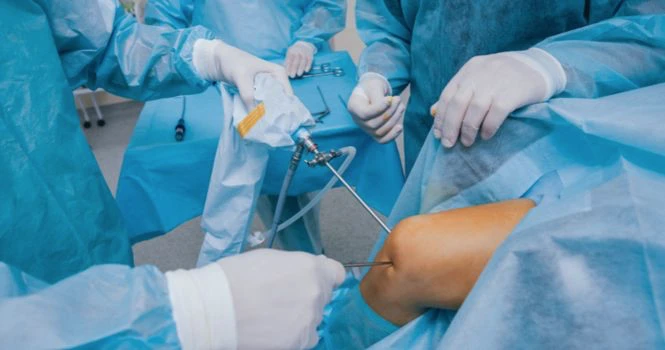Infertility Treatments in India Guide delves into the diverse and advanced options available in India for couples facing fertility challenges.
If you and your partner have been living together and actively trying to conceive for over a year without success, it may be time to explore potential underlying issues.
Consulting an infertility specialist can be an important step in your journey toward parenthood.
Before going into details of Infertility Treatments in India, let’s see few statistics
Prevalence of Infertility
According to WHO Report, Around 17.5% of the adult population – roughly 1 in 6 worldwide – experience infertility issues.
When talking about infertility, it’s essential to distinguish between primary infertility (where a couple has never conceived) and secondary infertility (where a couple has conceived before but is currently having difficulty).
Causes of Infertility In Men
Infertility in men can arise from a variety of causes, some of which are as follows:
Hormonal Imbalance
- Imbalances in hormones such as testosterone, luteinizing hormone (LH), and follicle-stimulating hormone (FSH) can affect sperm production.
Varicocele
- This is a swelling of the veins that drain the testicle and is one of the most common reversible causes of male infertility.
Infections
- Infections causing epididymitis, orchitis, and sexually transmitted infections like gonorrhea and HIV can affect sperm quality and quantity.
- Ejaculatory Issues
- Conditions like retrograde ejaculation can lead to infertility by affecting the delivery of sperm.
Obstruction of Ejaculatory Ducts
- Obstruction can occur at various levels of the male reproductive tract and significantly impact the sperm’s ability to reach the egg for fertilization.
Chromosomal or Genetic Causes
- Conditions like Klinefelter syndrome, Y chromosome deletions, and other chromosomal disorders can lead to infertility.
Environmental Factors
- Exposure to harmful substances such as pesticides, heavy metals, and radiation can reduce sperm function.
Lifestyle Factors
- Excessive stress, smoking, drug abuse, and alcohol consumption can negatively affect sperm quality. Obesity is also associated with fertility issues in men.
Medication and Treatment
- Certain drugs, including some antibiotics, antihypertensives, and anabolic steroids, can adversely affect fertility. Cancer treatments like chemotherapy and radiation can also have a long-lasting impact on fertility.
Idiopathic or Unexplained Causes
- In some cases, the cause of infertility cannot be determined, even after extensive testing.
Autoimmune Disorders
- In some instances, the immune system can mistakenly target sperm cells, which can lead to fertility issues.
Erectile Dysfunction
- Difficulty maintaining an erection can also result in infertility issues, although this is usually a secondary symptom to an underlying health issue.
Age
- While men can generally conceive over a more extended period than women, sperm quality does diminish with age, particularly after 40.
Testicular Overheating
- Prolonged exposure to high temperatures (as in saunas or hot tubs) can affect sperm quality. Even keeping a laptop on one’s lap for extended periods can increase testicular temperatures enough to impact sperm quality.
Evaluation for male infertility often includes a comprehensive history, physical examination, semen analysis, and other specialized tests, depending on the suspected underlying condition.
Treatment often involves addressing the underlying condition, lifestyle modifications, and sometimes assisted reproductive technologies like intrauterine insemination (IUI) or in vitro fertilization (IVF).
Always consult your doctor for diagnosis and treatment.
Causes of Infertility In Women
Infertility in women can arise from various causes that may affect the ovaries, fallopian tubes, uterus, or the hormone regulation system. Here are some common factors that contribute to female infertility:
Ovulatory Disorders
- Polycystic Ovary Syndrome (PCOS): A hormonal imbalance leading to irregular ovulation.
- Premature Ovarian Failure: The ovaries stop working before the age of 40.
- Hyperprolactinemia: Elevated levels of the hormone prolactin can disrupt ovulation.
Tubal Factors
- Blocked or damaged fallopian tubes can prevent the egg from meeting the sperm.
- Pelvic Inflammatory Disease (PID): An infection that can damage the fallopian tubes and other parts of the female reproductive system.
- Tubal Ligation: A type of sterilization procedure that blocks the tubes.
Endometriosis
- Endometrial tissue growing outside the uterus can affect the function of the ovaries, uterus, and fallopian tubes.
Uterine Factors
- Fibroids: Non-cancerous tumors in the uterine wall may interfere with the implantation of the fertilized egg.
- Endometrial Polyps: Growths in the uterine cavity can interfere with implantation.
- Uterine Abnormalities: Congenital or acquired abnormalities in the shape of the uterus can affect fertility.
Hormonal Imbalance
- Thyroid Disorders: Both hyperthyroidism and hypothyroidism can affect fertility.
- Adrenal Disorders: Conditions like Cushing’s syndrome can affect fertility.
Lifestyle Factors
- Obesity: A high body mass index (BMI) is associated with infertility.
- Eating Disorders: Anorexia or bulimia can lead to fertility problems.
- Stress: Elevated stress levels can disrupt hormonal balance and may lead to menstrual irregularities and fertility issues.
- Smoking and Alcohol: Both can negatively affect fertility.
- Exercise: Both insufficient and excessive physical activity can affect fertility.
Age
- Female fertility starts to decline in the late 20s and more dramatically after the age of 35.
Environmental Factors
- Exposure to certain chemicals, medications, or radiation can affect fertility.
Unexplained Infertility
- In some cases, no identifiable cause is found for a couple’s infertility.
Medical Treatments
- Some cancer treatments, such as chemotherapy and radiation, can impair fertility.
Autoimmune Disorders
- Certain autoimmune disorders like lupus and celiac disease can contribute to infertility.
Diagnosis usually involves a thorough medical history, physical examination, hormone tests, and imaging studies like ultrasound. Depending on the underlying condition, treatments may involve medications to stimulate ovulation, surgery to remove blockages or treat conditions like endometriosis, or assisted reproductive technologies like intrauterine insemination (IUI) or in vitro fertilization (IVF).
It’s crucial to consult your doctor for a complete diagnosis and appropriate treatment.
Common Myths and Misconceptions
Infertility is a topic that’s often misunderstood, leading to a range of myths and misconceptions that can cause unnecessary stress or delay in seeking appropriate treatment. Here are some common myths and the truths that dispel them:
Myth 1: Infertility is a Woman’s Problem
Truth: Infertility affects both men and women. According to some estimates, male and female factors contribute equally to infertility. It’s crucial for both partners to get evaluated if a couple is experiencing difficulties conceiving.
Myth 2: Infertility is Rare
Truth: Infertility is more common than many people think. According to some estimates, about 1 in 8 couples have trouble getting pregnant or sustaining a pregnancy.
Myth 3: You Just Need to Relax and Stop Stressing
Truth: While excessive stress can contribute to infertility, simply “relaxing” is often not a cure for most cases of infertility, which can be due to medical issues requiring specialized treatment.
Myth 4: You’re Trying Too Hard
Truth: Frequency of intercourse usually has a modest effect on fertility, and “trying too hard” is generally not a scientifically supported cause of infertility.
Myth 5: Age Doesn’t Matter As Long As You’re Healthy
Truth: Age is a significant factor in fertility for both men and women. Female fertility starts to decline in the late 20s, more sharply after the age of 35, and male fertility also diminishes with age, albeit generally more gradually.
Myth 6: Infertility is a Psychological Problem
Truth: Infertility is often a physiological issue, although emotional and psychological stress can arise as a result of infertility itself.
Myth 7: All Twins are a Result of IVF
Truth: While the rate of twin births is higher with some fertility treatments like IVF, many twins are conceived naturally.
Myth 8: IVF Guarantees You’ll Have a Baby
Truth: IVF improves the odds but is not a guarantee. Success rates vary widely depending on age, cause of infertility, and other health factors.
Myth 9: Birth Control Causes Infertility
Truth: Most women regain their fertility within a few months of discontinuing birth control. Long-term infertility after stopping birth control is rare and may be due to other underlying factors.
Myth 10: Herbal Remedies Can Cure Infertility
Truth: While some herbal products claim to boost fertility, there’s limited scientific evidence to support such claims. Some might even interact with prescription medications or worsen underlying conditions.
Myth 11: You Should Always Do Invasive Treatments First
Truth: Many infertility treatments are stepped, starting with lifestyle modifications and medication before moving on to more invasive procedures like IVF.
Myth 12: Infertility Means You’ll Never Have a Child
Truth: Infertility is a medical condition that many couples manage to overcome through various treatments. It doesn’t mean a couple will never conceive; it means they may require medical assistance to do so.
It’s essential to consult healthcare professionals for accurate information and appropriate treatments if you’re facing fertility issues. Misconceptions can delay treatment and add emotional stress to an already challenging situation.
Diagnosing Infertility
Diagnosing infertility is a complex process that usually involves a series of tests and evaluations for both partners.
The exact tests can depend on the suspected underlying issues and can differ for men and women. Here is an overview of some common diagnostic procedures:
General Steps
1. Initial Consultation: A healthcare provider will typically start by asking about sexual habits, menstrual history, contraceptives used, previous pregnancies, medications, and lifestyle factors like stress, diet, and exercise.
2. Physical Examination: Both partners may undergo a general physical exam, which for women may include a pelvic examination.
Diagnostics for Men
1. Semen Analysis: This is the most common test for men, evaluating factors like sperm count, morphology (shape), motility (movement), and other variables.
2. Hormonal Testing: Blood tests can check levels of hormones like testosterone and FSH, which are crucial for sperm production.
3. Ultrasound: Used less commonly, this can help to check for conditions such as retrograde ejaculation and ejaculatory duct obstruction.
4. Post-Ejaculation Urinalysis: This test can identify whether sperm are being redirected into the bladder during ejaculation instead of out of the penis (known as retrograde ejaculation).
5. Testicular Biopsy: In some cases, a small sample of tissue may be taken from the testes to identify abnormalities contributing to infertility.
Diagnostics for Women
1. Ovulation Testing: A blood test measures hormone levels to confirm that an egg is being released during the menstrual cycle.
2. Hysterosalpingography (HSG): This is an X-ray test that looks at the inside of the uterus and fallopian tubes and the area around them. It often involves injecting a dye.
3. Transvaginal Ultrasound: An internal ultrasound can provide a view of the condition of the ovaries and the thickness of the uterine lining.
4. Laparoscopy: This surgical procedure allows doctors to look directly at the fallopian tubes, ovaries, and uterus for abnormalities like endometriosis or blockages.
5. Hormone Testing: Blood tests can be conducted to check for hormone levels, including FSH, LH, estradiol, and progesterone, which are essential for ovulation and fertility.
6. Endometrial Biopsy: A sample of the uterine lining is examined for abnormalities.
Additional Testing for Both
1. Genetic Testing: This can identify specific genetic disorders that may be affecting fertility.
2. Immunological Tests: Sometimes the immune system can interfere with fertility, and specific tests can identify these issues.
Based on these diagnostic tests, healthcare providers can often identify whether the cause of infertility is due to male factors, female factors, both, or remains unexplained.
A thorough diagnostic evaluation is essential for determining the most effective course of treatment, which could range from medication and lifestyle changes to assisted reproductive technologies like intrauterine insemination (IUI) or in vitro fertilization (IVF).
Let’s understand few Infertility Treatments
Assisted Reproductive Technologies (ART)
In Vitro Fertilization (IVF)

Assisted Reproductive Technologies (ART) encompass a variety of procedures designed to help couples who are struggling with infertility. Among these technologies, In Vitro Fertilization (IVF) is perhaps the most well-known and widely utilized. Here’s a closer look at IVF:
What is IVF?
In Vitro Fertilization is a process in which eggs are extracted from a woman’s ovaries and fertilized with sperm in a laboratory. Once fertilized, the resulting embryos are cultured for a few days before being transferred into the woman’s uterus with the aim of achieving a successful pregnancy.
IVF Process Steps
Ovarian Stimulation: The woman usually receives hormonal injections to stimulate the ovaries to produce multiple eggs rather than the single egg that typically develops each month.
Monitoring: The growth and development of the follicles are closely monitored through ultrasound and blood tests.
Egg Retrieval: Once the eggs are mature, they are retrieved through a minor surgical procedure, often using ultrasound guidance.
Sperm Collection: Sperm are collected from the male partner (or a donor) on the day of egg retrieval.
Fertilization: The collected eggs and sperm are mixed together in a lab to allow for fertilization. In some cases, a single sperm is injected directly into each egg, a process known as Intracytoplasmic Sperm Injection (ICSI).
Embryo Culture: The fertilized eggs (now embryos) are cultured in a laboratory for several days until they reach an appropriate stage for transfer.
Embryo Transfer: One or more embryos are transferred into the woman’s uterus using a thin catheter. Any extra embryos may be frozen for future use.
Pregnancy Test: About two weeks after the embryo transfer, a blood test is performed to determine if pregnancy has occurred.
Considerations and Risks
- Success Rate: The success of IVF depends on various factors, including the age of the woman, the cause of infertility, the quality of the sperm, and the expertise of the medical team.
- Multiple Pregnancies: IVF increases the chance of multiple births if more than one embryo is transferred. This poses risks both to the mother and the babies.
- Cost: IVF is often expensive and may not be covered by insurance.
- Emotional Toll: The process can be emotionally draining, particularly if it doesn’t result in a successful pregnancy.
- Health Risks: While generally considered safe, IVF has some risks, including ovarian hyperstimulation syndrome (OHSS), ectopic pregnancy, and minor risks associated with egg retrieval procedures.
- Ethical Considerations: Some people have ethical concerns about aspects like embryo disposal or selective reduction in the case of multiple pregnancies.
Variants and Add-Ons
- ICSI (Intracytoplasmic Sperm Injection): Useful in cases of male infertility.
- PGS/PGD (Preimplantation Genetic Screening/Diagnosis): Screening embryos for genetic disorders before transfer.
- Frozen Embryo Transfer: Using frozen embryos in subsequent cycles if the fresh cycle fails or for additional children later.
- Blastocyst Transfer: Transferring the embryo at a later stage of development (usually day 5 or 6) to improve the chances of implantation.
In summary, IVF is a versatile and effective technology that has allowed many couples to overcome a range of infertility issues. However, it’s essential to consult healthcare providers for an accurate diagnosis and tailored treatment plan.
Let’s know more about the variants;
Intracytoplasmic Sperm Injection (ICSI)
Intracytoplasmic Sperm Injection (ICSI) is a specialized form of in vitro fertilization (IVF) primarily designed to address male factor infertility. In this procedure, a single sperm is directly injected into the cytoplasm of a mature egg using a fine glass needle, rather than allowing sperm to penetrate the egg naturally in a petri dish as in conventional IVF.
This technique is especially beneficial for men with low sperm counts, poor sperm motility, or abnormal sperm morphology. ICSI can also be used in cases where previous IVF attempts have failed or when using frozen sperm.
The fertilized egg is then cultured in a laboratory setting before being transferred into the woman’s uterus, similar to the IVF process.
While ICSI has been a game-changer in treating male infertility, allowing many couples to conceive who otherwise might not have been able to, it also carries the standard risks and ethical considerations associated with IVF, such as the potential for multiple births or genetic anomalies.
Assisted Hatching
Assisted hatching is an additional laboratory technique sometimes used in conjunction with in vitro fertilization (IVF) to improve the chances of successful embryo implantation.
During the early stages of development, the embryo is encased in a layer of proteins known as the zona pellucida. Normally, the embryo “hatches” out of this layer to implant into the uterine wall.
However, in some cases—particularly for older women or those who have had multiple failed IVF cycles—the zona pellucida may be thicker or harder, making it more difficult for the embryo to hatch and implant successfully.
In assisted hatching, a small hole is made in the zona pellucida using either acid, lasers, or mechanical methods. This is typically done just before the embryo is transferred to the uterus.
The intention is to facilitate the hatching process, making it easier for the embryo to implant into the uterine lining. It’s worth noting that assisted hatching is not suitable for everyone and is generally considered for specific cases where the chances of successful implantation might be compromised.
While some studies suggest that assisted hatching can improve pregnancy rates in certain groups of patients, its overall effectiveness is still a subject of debate within the medical community.
Additionally, there are some associated risks, such as potential damage to the embryo during the hatching process or increased likelihood of identical twins, which come with their own set of complications. As with any assisted reproductive technology, it’s essential to consult healthcare providers for an individualized treatment plan.
Preimplantation Genetic Diagnosis (PGD)
Preimplantation Genetic Diagnosis (PGD) is an advanced reproductive technology used alongside In Vitro Fertilization (IVF) to screen embryos for specific genetic or chromosomal disorders before they are implanted into the uterus.
PGD allows prospective parents to make informed decisions about proceeding with a pregnancy, especially when they are known carriers for certain conditions, have a history of recurrent miscarriages, or have experienced previous IVF failures.
The procedure is usually recommended for couples at risk of transmitting genetic diseases like cystic fibrosis, sickle cell anemia, or Huntington’s disease, as well as for those concerned about chromosomal abnormalities like Down syndrome.
The PGD process involves several steps:
1. Embryo Creation: Eggs are retrieved from the woman’s ovaries and fertilized in the lab, typically through IVF or Intracytoplasmic Sperm Injection (ICSI).
2. Embryo Culturing: The embryos are cultured in the lab until they reach a certain stage of development (usually a blastocyst on day 5 or 6).
3. Biopsy: A few cells are carefully removed from each embryo using a micromanipulator.
4. Genetic Testing: The extracted cells are then analyzed for specific genetic or chromosomal markers.
5. Embryo Selection: Only embryos that are free from the targeted disorders are considered for implantation into the woman’s uterus.
6. Embryo Transfer: One or more healthy embryos are transferred into the uterus, and any additional suitable embryos may be frozen for future use.
PGD offers the advantage of reducing the risk of having a child with a genetic disorder, but it is not without ethical considerations, including concerns about “designer babies,” where embryos might be selected for traits other than disease avoidance.
There are also potential risks, such as accidental damage to the embryo during the biopsy process.
Despite these concerns and risks, PGD provides an invaluable option for many couples who are at higher risk for certain genetic conditions, allowing them the chance to have a healthy baby.
Natural Cycle IVF
Natural Cycle IVF is a variation of traditional In Vitro Fertilization (IVF) that avoids the use of hormonal stimulation to produce multiple eggs.
Instead, the process relies on the woman’s natural menstrual cycle and aims to collect the one mature egg that is naturally produced during that cycle.
This approach is considered more “natural” because it mimics the regular ovulatory process and avoids the hormonal medications commonly used in conventional IVF to stimulate the ovaries to produce multiple eggs.
Steps in Natural Cycle IVF
1. Monitoring: The woman’s natural menstrual cycle is closely monitored using blood tests and ultrasound scans to identify the timing of natural ovulation.
2. Egg Retrieval: Just before the egg is naturally released from the ovary, it is retrieved using a fine needle under ultrasound guidance, similar to the egg retrieval step in traditional IVF.
3. Fertilization: The retrieved egg is then fertilized in the laboratory using the partner’s (or a donor’s) sperm.
4. Embryo Transfer: If fertilization is successful, the resulting embryo is transferred into the woman’s uterus for implantation and development, usually within a few days after fertilization.
Advantages
- Fewer Medications: Natural Cycle IVF avoids the use of hormonal stimulation, making the process less physically demanding and potentially reducing side effects and costs.
- Lower Risk of OHSS: Without hormonal stimulation, the risk of Ovarian Hyperstimulation Syndrome (OHSS), a condition that can occur with hormonal treatments, is eliminated.
- Natural Approach: Some women prefer this method because it is closer to natural conception.
Disadvantages
- Lower Success Rates: Natural Cycle IVF generally has lower success rates compared to conventional IVF, primarily because only one egg is retrieved and fertilized.
- Risk of No Egg Retrieval: Because only one egg is produced, there’s a risk that no eggs may be retrieved if the timing is not precise.
- Multiple Cycles May Be Needed: Due to the lower success rates and the retrieval of only one egg, multiple cycles may be required, potentially offsetting the cost benefits.
Natural Cycle IVF may be a good option for women who are averse to the idea of hormonal stimulation, have medical contraindications for such treatments, or have ethical or religious reasons for avoiding the production of multiple embryos.
However, the suitability and effectiveness of this approach should be thoroughly discussed with healthcare providers to determine if it’s the right option for you.
Gamete Intrafallopian Transfer (GIFT)
Gamete Intrafallopian Transfer (GIFT) is an assisted reproductive technology that involves transferring both sperm and eggs directly into a woman’s fallopian tubes for fertilization to occur naturally within the body. GIFT was developed as an alternative to In Vitro Fertilization (IVF), particularly for couples who have ethical or religious concerns about fertilizing eggs outside the body.
However, it’s worth noting that GIFT is less commonly used today due to the high success rates and advancements in IVF and Intracytoplasmic Sperm Injection (ICSI) techniques.
Steps in GIFT
1. Ovarian Stimulation: Similar to IVF, the woman’s ovaries are stimulated with fertility medications to produce multiple eggs.
2. Egg Retrieval: Eggs are retrieved from the ovaries using a fine needle, typically guided by ultrasound.
3. Sperm Collection: Sperm is collected from the male partner or a donor.
4. Transfer: Unlike IVF, where eggs are fertilized in the lab, the eggs and sperm are mixed together and then immediately transferred into the woman’s fallopian tubes using a laparoscope. The aim is for fertilization to occur naturally within the body.
5. Pregnancy Test: A pregnancy test is performed a few weeks later to check for successful implantation and pregnancy.
Advantages
- Natural Fertilization: GIFT allows fertilization to occur inside the body, which may be preferable for those with ethical or religious concerns about IVF.
- Avoids Embryo Manipulation: GIFT eliminates the need for embryo culture and manipulation, again addressing some ethical concerns.
- Suitable for Certain Medical Conditions: GIFT may be an option for women with at least one functioning fallopian tube and no other significant fertility issues.
Disadvantages
- Invasive Procedure: GIFT requires a surgical procedure (laparoscopy) to place the eggs and sperm into the fallopian tubes, making it more invasive than IVF.
- Limited Diagnostic Information: Since fertilization occurs inside the body, there is no way to know if it actually took place until a pregnancy test is performed.
- Not Suitable for All: GIFT is not suitable for women with blocked or damaged fallopian tubes, or for men with severe sperm quality issues.
- Lower Popularity: GIFT has largely been eclipsed by the advancements and higher success rates of IVF and ICSI.
Given the surgical requirements, GIFT is generally more expensive and invasive than IVF. However, for couples who prefer a more “natural” method of fertilization or have specific ethical or religious considerations, GIFT may offer a viable alternative.
As always, the appropriateness of this or any fertility treatment should be discussed in detail with healthcare providers.
Zygote Intrafallopian Transfer (ZIFT)
Zygote Intrafallopian Transfer (ZIFT) is another assisted reproductive technology that serves as an intermediary between In Vitro Fertilization (IVF) and Gamete Intrafallopian Transfer (GIFT).
Like IVF, ZIFT involves fertilizing the egg in a laboratory setting.
However, similar to GIFT, the fertilized egg—or zygote—is transferred into the woman’s fallopian tube rather than the uterus. The idea is for the zygote to travel naturally down the fallopian tube and implant into the uterine lining, thereby achieving pregnancy.
Steps in ZIFT
- Ovarian Stimulation: The woman’s ovaries are stimulated to produce multiple eggs using fertility drugs.
- Egg Retrieval: Eggs are collected from the ovaries using ultrasound-guided aspiration.
- Sperm Collection: Sperm is collected from the male partner or a donor.
- In-Lab Fertilization: The eggs and sperm are combined in the laboratory to facilitate fertilization.
- Zygote Transfer: Once fertilization occurs, the resulting zygote is transferred into the woman’s fallopian tube through a surgical procedure, usually laparoscopy.
- Pregnancy Test: A pregnancy test is administered a couple of weeks later to confirm if implantation and pregnancy have occurred.
Advantages
- Natural Implantation: Similar to GIFT, ZIFT allows for a somewhat more “natural” implantation process.
- Embryo Quality Check: Unlike GIFT, ZIFT allows for the inspection of the zygote before transfer, as fertilization occurs in the lab.
- Ethical Considerations: ZIFT may be an option for those who have ethical or religious concerns with IVF but are comfortable with brief in-lab fertilization.
Disadvantages
- Invasive Procedure: Like GIFT, ZIFT requires laparoscopy, a surgical procedure, to place the zygote in the fallopian tube.
- Not Suitable for All: ZIFT is not an option for women with blocked or damaged fallopian tubes or for men with significant sperm quality issues.
- Lower Popularity: Due to the invasiveness, cost, and the success of other techniques like IVF and ICSI, ZIFT is less commonly performed nowadays.
- Risk of Ectopic Pregnancy: Since the zygote is placed in the fallopian tube, there’s a slightly higher risk of ectopic pregnancy compared to IVF.
Just like any other fertility treatment, the decision to proceed with ZIFT should be made in consultation with healthcare providers, taking into account the specific circumstances and needs of the couple.
Embryo Freezing
Embryo freezing, also known as cryopreservation, is a procedure in which fertilized eggs or embryos are preserved by cooling them to sub-zero temperatures, typically around -196°C (-320.8°F).
This procedure is often done as part of In Vitro Fertilization (IVF) treatments, allowing for the storage of excess embryos for future use.
Embryo freezing provides couples with the flexibility to attempt multiple pregnancy cycles from a single egg retrieval session, thereby reducing the physical and emotional toll of undergoing multiple full cycles of IVF.
Steps in Embryo Freezing
- Embryo Creation: As part of an IVF cycle, eggs are retrieved from the ovaries and fertilized in the lab.
- Embryo Assessment: Embryologists monitor the fertilized eggs as they divide and develop into embryos. High-quality embryos are selected for freezing.
- Cryopreservation: Selected embryos are exposed to a cryoprotectant solution to protect their cellular structure and then rapidly cooled to ultra-low temperatures using either a slow-freezing technique or vitrification, a fast-freezing method that turns the embryos into a glass-like state.
- Storage: The frozen embryos are stored in liquid nitrogen tanks until they are needed for a future pregnancy attempt.
- Thawing: When the couple is ready for another pregnancy attempt, the frozen embryos are carefully thawed and assessed for quality.
- Embryo Transfer: Viable thawed embryos are transferred back into the woman’s uterus for implantation.
Advantages
- Future Pregnancy Attempts: Couples can store embryos for future use, allowing them the possibility of multiple children from a single egg retrieval cycle.
- Reduced Costs: Since the eggs have already been retrieved and fertilized, using frozen embryos for subsequent cycles is generally less expensive than undergoing a full new cycle of IVF.
- Reduced Physical Burden: Women can avoid the need for additional ovarian stimulation and egg retrieval procedures.
Disadvantages
- Not 100% Guaranteed: While freezing techniques are highly advanced, not all embryos survive the freezing and thawing process.
- Ethical and Legal Concerns: Couples must decide what to do with any unused embryos, which can raise ethical, religious, or legal questions.
- Storage Costs: There’s an ongoing cost for storing frozen embryos, and storage facilities must be maintained meticulously to ensure embryo viability.
Embryo freezing is a powerful tool in assisted reproductive technologies, offering numerous benefits, but it also comes with its own set of challenges and considerations.
As with any medical procedure, it’s crucial to consult with healthcare providers for an individualized treatment plan.
Insemination Procedures
Insemination procedures are among the simpler and less invasive forms of assisted reproductive technologies (ART) designed to aid conception. Here’s a breakdown of some commonly used methods:
Intrauterine Insemination (IUI)
Intrauterine Insemination (IUI) involves placing sperm directly into the uterus around the time of ovulation, thereby bypassing the cervix and increasing the chances of the sperm meeting the egg.
Steps in IUI
- Ovulation Monitoring: The woman’s ovulation cycle is tracked using blood tests, ultrasound, or ovulation predictor kits.
- Sperm Collection and Preparation: A semen sample is collected from the male partner or a donor. The sperm is then “washed” in a lab to concentrate the healthiest sperm and remove seminal fluid and other impurities.
- Insemination: Using a catheter, the washed sperm is directly introduced into the uterus, usually timed to coincide with ovulation.
- Pregnancy Test: A pregnancy test is conducted after about two weeks to determine if the procedure was successful.
Advantages
- Less Invasive: IUI is less invasive and generally less expensive than IVF or other ART procedures.
- Simpler Procedure: It can be done in a doctor’s office and doesn’t usually require anesthesia.
Disadvantages
- Lower Success Rates: IUI generally has lower success rates compared to more advanced ART procedures.
- Multiple Pregnancies: There’s a chance of multiple pregnancies, especially if ovulation-stimulating medications are used.
Donor Sperm
Donor sperm can be used in various fertility treatments, including IUI, IVF, and even less invasive methods like intracervical insemination (ICI). Sperm donors can be anonymous or known to the recipients.
Advantages
- Options for Different Family Structures: Donor sperm allows single women to have biological children.
- Bypasses Male Factor Infertility: For heterosexual couples dealing with male factor infertility, using donor sperm can be a way to achieve pregnancy.
Disadvantages
- Ethical and Legal Considerations: The use of donor sperm can raise ethical and legal issues, particularly around the child’s right to know their genetic heritage.
- Cost: Purchasing and storing donor sperm can be expensive.
Both IUI and the use of donor sperm can be effective methods for achieving pregnancy, but they come with their own sets of advantages and disadvantages. If you’re considering using these methods, it’s essential to consult healthcare providers for an individualized assessment and treatment plan.
Ovulation Stimulation
Ovulation stimulation, also known as ovulation induction, is often the first line of treatment for women who have irregular ovulation cycles or who are not ovulating at all.
This treatment aims to stimulate the development and release of mature eggs for fertilization. Various medications and therapies can be used for ovulation stimulation, depending on the specific diagnosis, previous treatments, and other individual factors.
Ovulation Induction
Ovulation induction involves the use of medications to stimulate the ovaries to produce one or more eggs. This is commonly used for conditions such as polycystic ovary syndrome (PCOS) or for women with irregular menstrual cycles.
Advantages
- Simple Treatment: Often oral medications are sufficient for effective treatment.
- Cost-Effective: Generally less expensive than other forms of ART like IVF.
Disadvantages
- Risk of Multiple Births: Ovulation induction increases the chance of multiple births, which carries its own set of risks.
- Ovarian Hyperstimulation Syndrome (OHSS): A rare but severe complication that can occur from the use of ovulation-stimulating drugs.
Clomid Therapy
Clomiphene citrate, commonly known as Clomid, is often one of the first treatments tried for ovulation induction. It is an oral medication that stimulates the pituitary gland to release hormones necessary for ovulation.
Advantages
- Non-Invasive: Taken orally, so no injections are required.
- Short Treatment Span: Usually taken for just 5 days within a menstrual cycle.
Disadvantages
- Lower Success Rate: Generally less effective than other treatments like gonadotropin therapy.
- Side Effects: Includes symptoms like hot flashes, bloating, and mood swings.
Gonadotropin Therapy
Gonadotropins are injectable hormones that directly stimulate the ovaries to produce multiple eggs. They are usually recommended when Clomid therapy has failed or in certain conditions like diminished ovarian reserve.
Advantages
- Higher Success Rates: Generally more effective than Clomid for inducing ovulation.
- Close Monitoring: Patients are closely monitored through ultrasound and blood tests, allowing precise control over treatment.
Disadvantages
- Injections: Requires regular injections, which some people find uncomfortable or stressful.
- High Risk of Multiple Births: Significantly increases the chances of having twins, triplets, or more.
- Risk of OHSS: Higher risk compared to Clomid.
Each ovulation stimulation method comes with its own set of benefits and drawbacks. A thorough evaluation by a healthcare provider will help determine the most suitable treatment for an individual or couple.
Endometrial Treatments
Endometrial treatments are targeted therapies that aim to improve the condition of the endometrial lining of the uterus, making it more receptive for embryo implantation.
An unresponsive or “hostile” endometrium can be a cause of infertility or recurrent miscarriages. One advanced diagnostic tool for assessing endometrial condition is Endometrial Receptivity Analysis (ERA).
Endometrial Receptivity Analysis (ERA)
ERA is a genetic test performed on a small sample of endometrial tissue to determine the optimal time for embryo implantation during an In Vitro Fertilization (IVF) cycle.
The procedure helps to identify the so-called “window of implantation,” which is the period when the endometrial lining is most receptive to an implanting embryo.
Procedure
- Endometrial Biopsy: A small sample of endometrial tissue is collected from the uterus through a minimally invasive procedure.
- Genetic Analysis: The biopsy is sent to a specialized laboratory where it is subjected to genetic analysis.
- Window of Implantation: The results determine whether the endometrial lining is receptive or non-receptive at the time of biopsy. This information is then used to tailor the timing of embryo transfer during an IVF cycle.
Advantages
- Tailored Treatment: ERA allows clinicians to personalize embryo transfer timing, potentially increasing the chances of a successful pregnancy.
- Unexplained Infertility: For couples facing unexplained infertility or recurrent miscarriages, an ERA test may provide insights into any endometrial receptivity issues.
- High Precision: The test gives a more precise understanding of the endometrial state than ultrasound or histological methods.
Disadvantages
- Cost: ERA is relatively expensive and is usually not covered by insurance.
- Invasive: A biopsy is required, making it more invasive than other fertility tests.
- Limited Utility: Some studies suggest that the test may not significantly improve pregnancy outcomes for all patient groups.
The use of ERA and other endometrial treatments should be considered in consultation with your doctor to determine their appropriateness based on an individual’s or couple’s specific medical history and fertility challenges.
Note: To receive information about our upcoming Infertility Treatment Options guidance service in India, please reach out to us at info@irastoworldhealth.com.. Although this service is not currently available, we encourage you to subscribe to our newsletter to stay informed about its launch and receive detailed information as soon as it becomes available.













